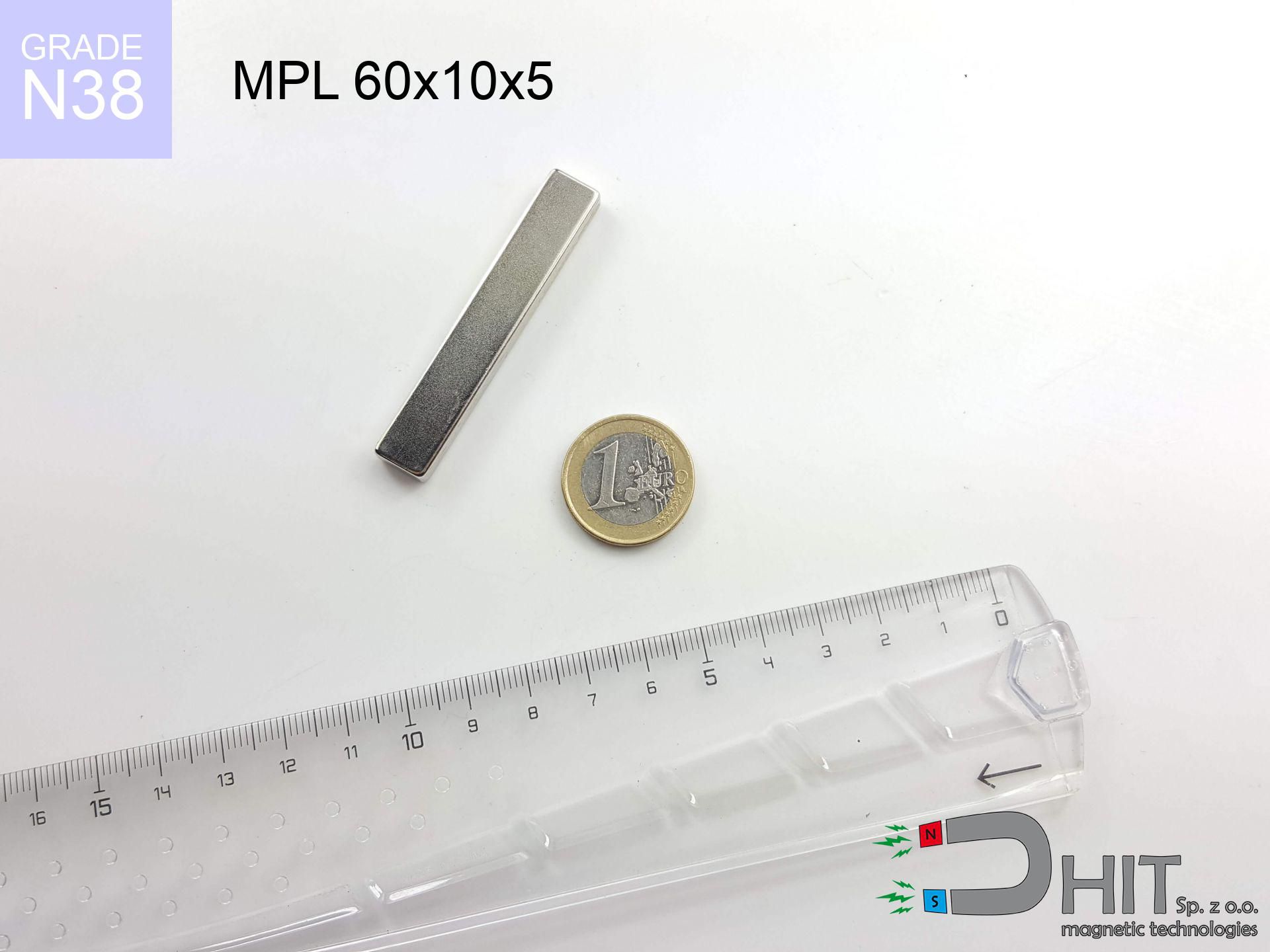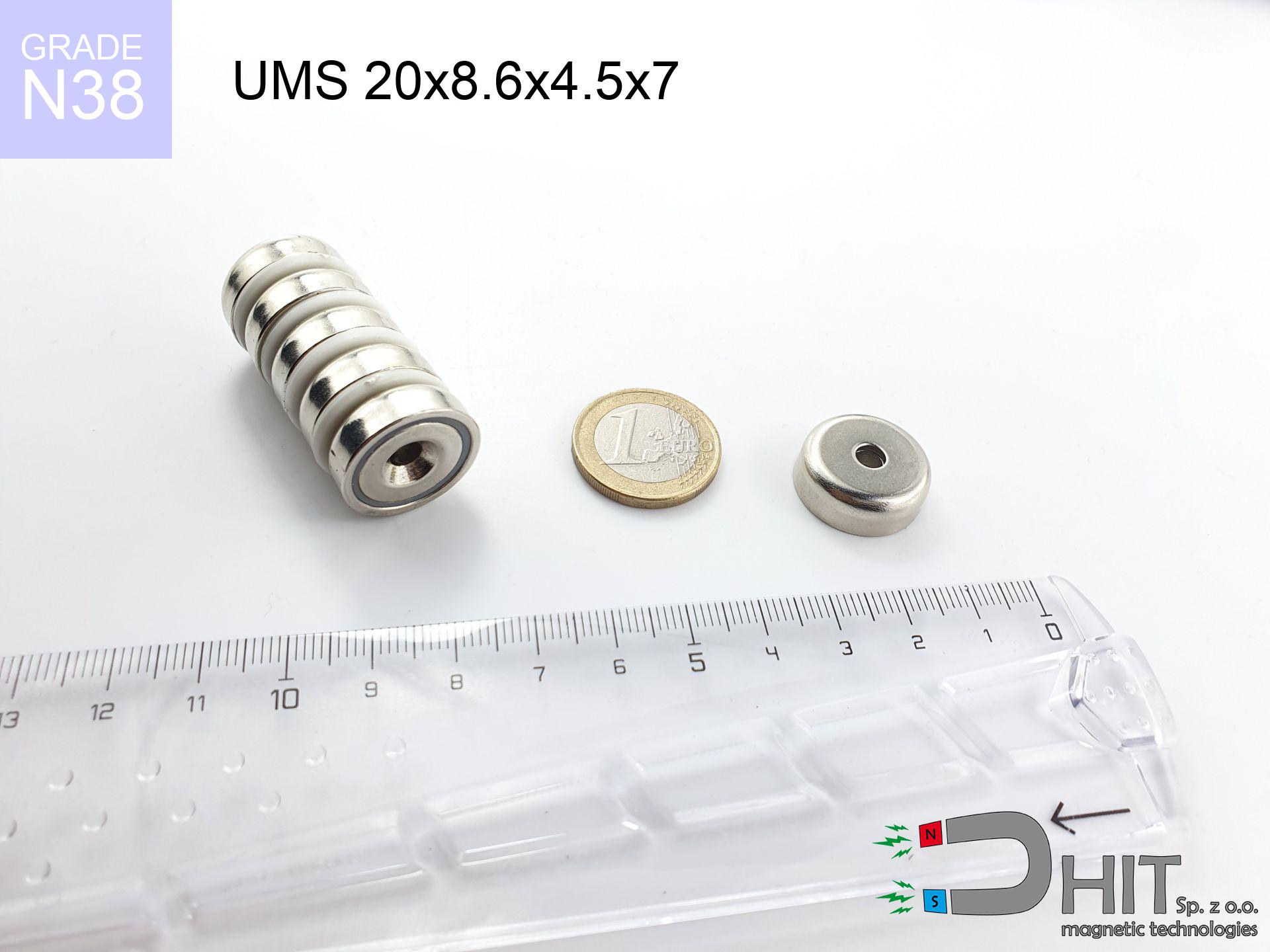AM klisza magnetyczna 50 x 50 mm - magnetic accessories
magnetic accessories
Catalog no 080471
GTIN: 5906301812517
Weight
0.05 g
24.60 ZŁ with VAT / pcs + price for transport
20.00 ZŁ net + 23% VAT / pcs
bulk discounts:
Need more?Need help making a decision?
Call us
+48 22 499 98 98
or drop us a message through
request form
the contact section.
Weight and shape of magnetic components can be estimated using our
online calculation tool.
Orders placed before 14:00 will be shipped the same business day.
AM klisza magnetyczna 50 x 50 mm - magnetic accessories
Specification / characteristics AM klisza magnetyczna 50 x 50 mm - magnetic accessories
| properties | values |
|---|---|
| Cat. no. | 080471 |
| GTIN | 5906301812517 |
| Production/Distribution | Dhit sp. z o.o. |
| Country of origin | Poland / China / Germany |
| Customs code | 85059029 |
| Weight | 0.05 g |
| Manufacturing Tolerance | ±1 mm |
Magnetic properties of material
| properties | values | units |
|---|
Physical properties of sintered neodymium magnets Nd2Fe14B at 20°C
| properties | values | units |
|---|---|---|
| Vickers hardness | ≥550 | Hv |
| Density | ≥7.4 | g/cm3 |
| Curie Temperature TC | 312 - 380 | °C |
| Curie Temperature TF | 593 - 716 | °F |
| Specific resistance | 150 | μΩ⋅Cm |
| Bending strength | 250 | Mpa |
| Compressive strength | 1000~1100 | Mpa |
| Thermal expansion parallel (∥) to orientation (M) | (3-4) x 106 | °C-1 |
| Thermal expansion perpendicular (⊥) to orientation (M) | -(1-3) x 10-6 | °C-1 |
| Young's modulus | 1.7 x 104 | kg/mm² |
Shopping tips
Advantages and disadvantages of rare earth magnets.
Besides their tremendous magnetic power, neodymium magnets offer the following advantages:
- They retain attractive force for around ten years – the drop is just ~1% (in theory),
- Magnets very well resist against demagnetization caused by external fields,
- In other words, due to the metallic finish of silver, the element looks attractive,
- Magnetic induction on the surface of the magnet turns out to be exceptional,
- Through (adequate) combination of ingredients, they can achieve high thermal strength, allowing for functioning at temperatures approaching 230°C and above...
- Possibility of accurate forming as well as optimizing to concrete conditions,
- Fundamental importance in future technologies – they find application in hard drives, electric drive systems, diagnostic systems, and multitasking production systems.
- Relatively small size with high pulling force – neodymium magnets offer impressive pulling force in small dimensions, which makes them useful in compact constructions
Disadvantages of neodymium magnets:
- At strong impacts they can crack, therefore we advise placing them in steel cases. A metal housing provides additional protection against damage and increases the magnet's durability.
- When exposed to high temperature, neodymium magnets suffer a drop in force. Often, when the temperature exceeds 80°C, their strength decreases (depending on the size, as well as shape of the magnet). For those who need magnets for extreme conditions, we offer [AH] versions withstanding up to 230°C
- Due to the susceptibility of magnets to corrosion in a humid environment, we suggest using waterproof magnets made of rubber, plastic or other material stable to moisture, in case of application outdoors
- Limited ability of producing nuts in the magnet and complicated shapes - preferred is casing - magnet mounting.
- Health risk resulting from small fragments of magnets can be dangerous, if swallowed, which gains importance in the context of child health protection. Additionally, small components of these devices are able to complicate diagnosis medical after entering the body.
- Due to neodymium price, their price is higher than average,
Maximum lifting force for a neodymium magnet – what contributes to it?
Holding force of 0 kg is a theoretical maximum value performed under the following configuration:
- on a base made of mild steel, effectively closing the magnetic field
- with a cross-section of at least 10 mm
- characterized by even structure
- under conditions of gap-free contact (surface-to-surface)
- during detachment in a direction perpendicular to the plane
- at temperature room level
Practical aspects of lifting capacity – factors
Real force is influenced by specific conditions, mainly (from priority):
- Gap (betwixt the magnet and the metal), because even a microscopic clearance (e.g. 0.5 mm) leads to a drastic drop in force by up to 50% (this also applies to varnish, rust or debris).
- Pull-off angle – note that the magnet holds strongest perpendicularly. Under sliding down, the capacity drops drastically, often to levels of 20-30% of the maximum value.
- Substrate thickness – to utilize 100% power, the steel must be adequately massive. Thin sheet restricts the attraction force (the magnet "punches through" it).
- Steel grade – the best choice is pure iron steel. Stainless steels may attract less.
- Surface condition – smooth surfaces ensure maximum contact, which improves field saturation. Rough surfaces reduce efficiency.
- Temperature – heating the magnet causes a temporary drop of force. It is worth remembering the thermal limit for a given model.
* Holding force was checked on a smooth steel plate of 20 mm thickness, when a perpendicular force was applied, in contrast under parallel forces the holding force is lower. In addition, even a minimal clearance {between} the magnet and the plate reduces the lifting capacity.
Precautions when working with NdFeB magnets
Keep away from children
Only for adults. Tiny parts can be swallowed, leading to intestinal necrosis. Keep away from kids and pets.
Thermal limits
Regular neodymium magnets (grade N) undergo demagnetization when the temperature goes above 80°C. Damage is permanent.
Dust is flammable
Powder produced during grinding of magnets is flammable. Avoid drilling into magnets without proper cooling and knowledge.
Immense force
Before use, check safety instructions. Sudden snapping can break the magnet or injure your hand. Think ahead.
Eye protection
Watch out for shards. Magnets can explode upon uncontrolled impact, launching sharp fragments into the air. We recommend safety glasses.
Allergy Warning
It is widely known that the nickel plating (standard magnet coating) is a strong allergen. If you have an allergy, refrain from touching magnets with bare hands and select coated magnets.
Electronic devices
Data protection: Neodymium magnets can damage data carriers and delicate electronics (pacemakers, medical aids, mechanical watches).
Magnetic interference
GPS units and smartphones are highly sensitive to magnetic fields. Direct contact with a strong magnet can permanently damage the sensors in your phone.
Medical implants
People with a heart stimulator should maintain an safe separation from magnets. The magnetic field can disrupt the operation of the implant.
Bodily injuries
Mind your fingers. Two powerful magnets will snap together immediately with a force of massive weight, crushing everything in their path. Exercise extreme caution!
Attention!
Details about hazards in the article: Safety of working with magnets.








